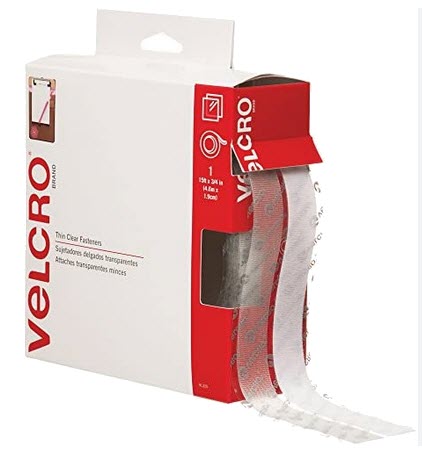 Some types of packaging utilize hook-and-loop fasteners. Such a fastener consists of two components: one component with tiny hooks and another component with small loops. When the two surfaces are pressed together, the hooks catch in the loops and the two pieces bind temporarily. You separate them by pulling or peeling the two surfaces apart.
Some types of packaging utilize hook-and-loop fasteners. Such a fastener consists of two components: one component with tiny hooks and another component with small loops. When the two surfaces are pressed together, the hooks catch in the loops and the two pieces bind temporarily. You separate them by pulling or peeling the two surfaces apart.
A hook-and-loop fastener can be used over and over again and can therefore be a good choice for packaging products where the ability to re-fasten is important. It is safe, virtually maintenance free and will still work well even after numerous fastenings and unfastenings.
Many people who struggle with other types of fasteners can still operate hook-and-loop fasteners without much effort.
With that said, there is a risk of the hook-and-loop fastener accumulating dust, fur and other debris. Another downside with using a hook-and-loop fastener is that it makes a characteristic sound when you unfasten it. In some situations, this is undesirable.
Velcro?
Due to the prominence of the brand Velcro, hook-and-loop fasteners are sometimes referred to as velcro fasteners even when not actually produced under the Velcro brand. Velcro has become somewhat of a generalized trade name for hook-and-loop fasteners.
Strength
Hook-and-loop fastenings are available at different strengths and it is important to select a strength that is suitable for the packaging. The strength of the bond partly depends on how well the hooks become embedded in the loops, but other factors also impact how easy it will be to separate the two surfaces again.
If one or both of the components are flexible, the two can be pulled apart with a peeling action that applies the force to comparatively few hooks at a time, making it fairly easy to open the fastening. If both components are rigid, it becomes considerably more difficult and requires more force. (The same is true when a flexible component that is pulled in a direction parallel to the plane of the surface.)
Here are some possible remedies if the strength of the bond between two flexible pieces is not enough for a particular type of packaging:
- Increase the surface area (i.e. use larger pieces)
- Increase the number of hooks and and loops per square centimetre.
- Change the configuration to ensure the force (when attempting to unfasten) is applied parallel to the plane of the fastener surface.
When the two components are placed on the same strap, and the strap is wrapped through a slot, the fastener will resist a surprisingly large force with only two small look-and-hoop surface areas. That is because the strap is wrapped through the slot, and this halves the force on the bond by acting as a pulley system. Also, some of the force will absorbed by the friction around the bend, and the whole configuration ensures that the force is applied parallel to the plane.
